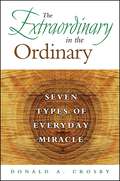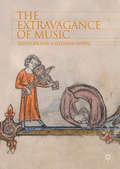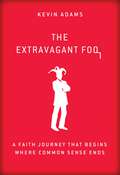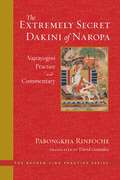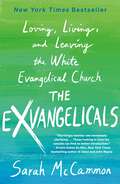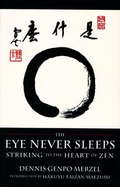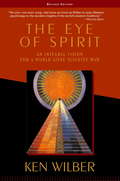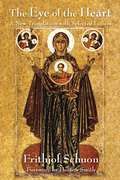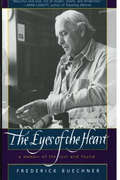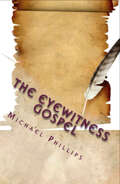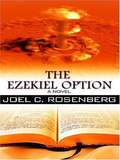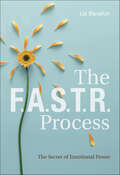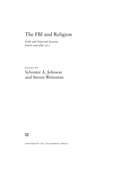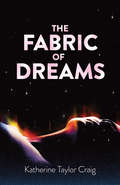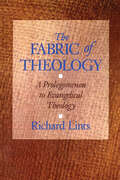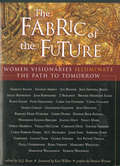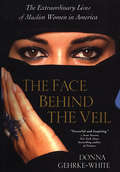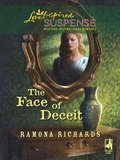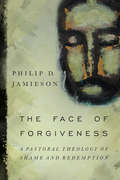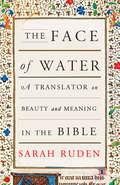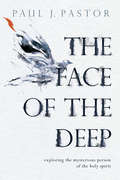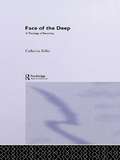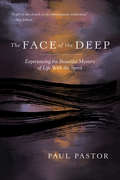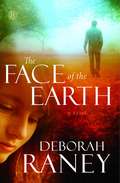- Table View
- List View
The Extraordinary in the Ordinary: Seven Types of Everyday Miracle
by Donald A. CrosbyMiracles are usually regarded as an intrusion of a supernatural force upsetting the normal workings and laws of the universe, but if one is attentive to the natural world, one can instead find miracles beneath the surface of everyday existence. This outlook is part of Donald A. Crosby's religious naturalism, which he terms Religion of Nature, a belief system that posits the natural world to be the only world, without any underlying or transcending supernatural being, presence, or power. In The Extraordinary in the Ordinary, Crosby explores seven types of everyday miracles, such as time, language, and love, to show that the miraculous and ordinary are not opposed to each other. Rather, it is when we acknowledge the sacred depths and dimensions of everyday existence that we recognize the miracles that constantly surround us.
The Extravagance of Music
by David Brown Gavin HoppsThis book explores the ways in which music can engender religious experience, by virtue of its ability to evoke the ineffable and affect how the world is open to us. Arguing against approaches that limit the religious significance of music to an illustrative function, The Extravagance of Music sets out a more expansive and optimistic vision, which suggests that there is an ‘excess’ or ‘extravagance’ in both music and the divine that can open up revelatory and transformative possibilities. In Part I, David Brown argues that even in the absence of words, classical instrumental music can disclose something of the divine nature that allows us to speak of an experience analogous to contemplative prayer. In Part II, Gavin Hopps contends that, far from being a wasteland of mind-closing triviality, popular music frequently aspires to elicit the imaginative engagement of the listener and is capable of evoking intimations of transcendence. Filled with fresh and accessible discussions of diverse examples and forms of music, this ground-breaking book affirms the disclosive and affective capacities of music, and shows how it can help to awaken, vivify, and sustain a sense of the divine in everyday life.
The Extravagant Fool: A Faith Journey That Begins Where Common Sense Ends
by Kevin AdamsThe Extravagant Fool is an underdog narrative. Readers will have a front row seat to Kevin Adams’s breathtaking story—one that builds chronologically through a very difficult four-year period. At the height of financial success, Kevin Adams had it all. A thriving business with more work than he could get to, investments spread out between luxury homes, commercial real estate, and new business ventures. However, by January 2009, over the course of the last 100 days of 2008, Kevin watched in silent amazement as he lost it all. His house of cards came tumbling down. Kevin had a choice: Do what he had always done—work harder. Or, let go of conventional thinking and learn to live by absolute faith in God. With foreclosures, lawsuits, potential homelessness, and his family looking to him for immediate answers, Kevin took the radical position of stopping every effort to survive and resting instead at the feet of Jesus. The process of living literally by faith is a gamble and one that only The Extravagant Fool for God is willing to take. The Extravagant Fool is about encountering God with an uncommon intimacy. Intimacy increases our ability to discern His voice, which leads to the revelation of who we are, what we are to do for Him on earth, and finally, the provision to carry it out. Yet none of this really takes hold without first hearing the kind of living, breathing, testimony offered by The Extravagant Fool, a man who staked his welfare—and future—entirely on the goodness of God.
The Extremely Secret Dakini of Naropa: Vajrayogini Practice and Commentary (The Dechen Ling Practice Series)
by Dechen Nyingpo PabongkhaA thorough and sparkling translation of an essential commentary on one of the most profound practices of Tibetan Buddhism.The Extremely Secret Dakini of Naropa has become the basis for almost every subsequent Vajrayogini commentary in the Gelug tradition. Kyabje Pabongkha&’s commentary is both very thorough in its presentation and deeply inspiring, providing rich detail on essential elements of Vajrayogini practice: - all eleven yogas of the generation stage - the transference of consciousness - tsok offering - left-sided conduct - and many other auxiliary practices There is also a stunning explanation of the completion stage that provides many extraordinarily profound methods unique to the practice of Vajrayogini. The second half of the book contains several sadhanas for the practice of Vajrayogini, including six-session guru yoga as well as two sadhanas on the transference of consciousness. "This is a teaching that practitioners can use to transform themselves into a buddha, like the artists who shape beautiful images out of raw materials." —Gelek Rimpoche
The Exvangelicals: Loving, Living, and Leaving the White Evangelical Church
by Sarah McCammonINSTANT NEW YORK TIMES BESTSELLER NATIONAL BESTSELLER"An intimate window into the world of American evangelicalism. Fellow exvangelicals will find McCammon’s story both startlingly familiar and immensely clarifying, while those looking in from the outside can find no better introduction to the subculture that has shaped the hopes and fears of millions of Americans." —Kristin Kobes Du Mez, New York Times bestselling author of Jesus and John Wayne The first definitive book that names the growing social movement of people leaving the church: the exvangelicals. Growing up in a deeply evangelical family in the Midwest in the ‘80s and ‘90s, Sarah McCammon was strictly taught to fear God, obey him, and not question the faith. Persistently worried that her gay grandfather would go to hell unless she could reach him, or that her Muslim friend would need to be converted, and that she, too, would go to hell if she did not believe fervently enough, McCammon was a rule-follower and—most of the time—a true believer. But through it all, she was increasingly plagued by fears and deep questions as the belief system she'd been carefully taught clashed with her expanding understanding of the outside world.After spending her early adult life striving to make sense of an unraveling worldview, by her 30s, she found herself face-to-face with it once again as she covered the Trump campaign for NPR, where she witnessed first-hand the power and influence that evangelical Christian beliefs held on the political right. Sarah also came to discover that she was not alone: she is among a rising generation of the children of evangelicalism who are growing up and fleeing the fold, who are thinking for themselves and deconstructing what feel like the “alternative facts” of their childhood.Rigorously reported and deeply personal, The Exvangelicals is the story of the people who make up this generational tipping point, including Sarah herself. Part memoir, part investigative journalism, this is the first definitive book that names and describes the post-evangelical movement: identifying its origins, telling the stories of its members, and examining its vast cultural, social, and political impact.
The Eye Never Sleeps
by Dennis Genpo MerzelThe radical challenge of Zen Buddhism is to drop all assumptions and prejudices and experience the truth directly. American Zen teacher Dennis Genpo Merzel brings new life to this ancient wisdom through his commentaries on a classic Chinese Zen scripture, "Verses on Faith-Mind," by the Third Patriarch of Zen, Sosan Zenji. The author strikes to the heart of Zen with clarity and force, expressing in modern terms, to an American audience, the essential wisdom and compassion of Sosan Zenji's famous poem. Full of colorful Zen lore and personal anecdotes from Dennis Genpo Merzel's life, these talks impart the Buddha's teaching directly and intimately, illuminating in simple words the timeless questions and problems of day-to-day life.
The Eye of Spirit: An Integral Vision for a World Gone Slightly Mad
by Ken WilberIn this groundbreaking book, Ken Wilber uses his widely acknowledged "spectrum of consciousness" model to completely rewrite our approach to such important fields as psychology, spirituality, anthropology, cultural studies, art and literary theory, ecology, feminism, and planetary transformation. What would each of those fields look like if we wholeheartedly accepted the existence of not just body and mind but also soul and spirit? In a stunning display of integrative embrace, Wilber weaves these various fragments together into a coherent and compelling vision for the modern and postmodern world.
The Eye of the Heart: A New Translation with Selected Letters
by Frithjof SchuonThis new edition of The Eye of the Heart, one of perennialist author Frithjof Schuon's earliest works, features a fully revised translation from the French original as well as over 50 pages of new material, including previously unpublished selections from the author's letters and other private writings. Also featured is a foreword by renowned religion scholar Huston Smith, an editor's preface, extensive editor's notes, a glossary of foreign terms and phrases, an index, and biographical notes.Schuon's perspective is that of the sophia perennis or &“perennial wisdom&”, which is capable of discerning the spiritual intentions behind religious doctrines, forms, and practices. The essays collected here cover a wide range of subjects, including the fundamental principles of spiritual symbolism, the enigmatic nature of evil, questions on the afterlife, and many invaluable insights concerning the integration of everyday activities into the spiritual life. Schuon also evokes the sacredness of creation and the message of beauty, which when seen with the &“eye of the heart&”, leads back to God.
The Eyes of the Heart: A Memoir of the Lost and Found
by Frederick BuechnerFrom critically acclaimed author and Pulitzer Prize runner-up Frederick Buechner comes another powerfully honest memoir, The Eyes of the Heart. Full of poinant insights into his most personal relationships, this moving account traces how the author was shaped as much by his family's secrets as by its celebrations.Within the innermost chambers of his consciousness, Buechner, in his characteristically self-searching style, explores the mysteries and truths behind his deepest connections to family, friends, and mentors. Extraordinarily moving, this memoir follows not chronology but the converging paths of Buechner's imagination and memory.Buechner invites us into his library-his own Magic Kingdom, Surrounded by his beloved books and treasures, we discover how they serve as the gateway to Buechner's mind and heart. He draws the reader into his recollections, moving seamlessly from reminiscence to contemplation. Buechner recounts events such as the tragic suicide of his father and its continual fallout on his life, intimate and little-known details about his deep friendship with the late poet James Merrill, and his ongoing struggle to understand the complexities of his relationship to his mother.This cast of characters comprised of Buechner's relatives and loved ones is brought to vibrant life by his peerless writing and capacity to probe the depths of his own consciousness. Buechner visits his past with an honest eye and a heart open to the most painful and life-altering of realizations. heartbreaking and enlightening, The Eyes of the Heart is a treasure for any who have ever pondered the meaning and mystery of their own past.As "one of our finest writers," according to author Annie Dillard, Frederick Buechner provides yet another chapter in the tale of his life in this gripping memoir tracing the complicated roots and path of his inner life and family, with their multitude of intersections." The Eyes of the Heart stands as a touching testimonial to the significance of kinship to the author as well as to the legions of readers who have come to regard him as one of their own.
The Eyewitness Gospel
by Michael PhillipsThe acclaimed Christian novelist and devotional author brings the Bible to life with this engaging fictionalized account of the Gospel and its writing.A small and insignificant village a few miles south of Jerusalem has been chosen by the heavens for the event that will change history. No one has an inkling of what is to come save the young woman chosen out of obscurity—like the village—to play a central role in the grand, unfolding drama. In Eyewitness Gospel, Michael Phillips applies his storytelling craft to a vivid retelling of Jesus’s life, death, and resurrection, as well as the tireless works of his apostles as they spread the good news.
The Ezekiel Option (Political Thrillers #3)
by Joel C. RosenbergSecurity has come to the Middle East. The Israelis and Palestinians have signed a peace agreement. But is the world rushing to the brink of an apocalypse prophesied more than 2500 years ago?
The F.A.S.T.R. Process: The Secret of Emotional Power
by Liz BarallonFASTR: Feel, Acknowledge, Start, Thank, Release. What if you could overcome society's deep-rooted cultural negative programming? Imagine the life you would be able to manifest! The FASTR Process is designed to help you master the art of guiding and elevating your emotions. By harnessing 29 powers, you can overcome any obstacle and improve your self-confidence. Use balance and intention to attract your desires and find your "True Purpose" in life. Get ready . . . life's about to go a lot FASTR!
The FBI and Religion: Faith and National Security before and after 9/11
by Steven Weitzman Sylvester A. JohnsonThe Federal Bureau of Investigation has had a long and tortuous relationship with religion over almost the entirety of its existence. As early as 1917, the Bureau began to target religious communities and groups it believed were hotbeds of anti-American politics. Whether these religious communities were pacifist groups that opposed American wars, or religious groups that advocated for white supremacy or direct conflict with the FBI, the Bureau has infiltrated and surveilled religious communities that run the gamut of American religious life. The FBI and Religion recounts this fraught and fascinating history, focusing on key moments in the Bureau's history. Starting from the beginnings of the FBI before World War I, moving through the Civil Rights Movement and the Cold War, up to 9/11 and today, this book tackles questions essential to understanding not only the history of law enforcement and religion, but also the future of religious liberty in America.
The Fabric of Dreams: Dream Lore and Dream Interpretation, Ancient and Modern
by Katherine Taylor CraigScience, history, symbolism, and collective wisdom combine for a fascinating blend of scholarship and spirituality in this exploration of ancient and modern dream lore and dream interpretation. Originally published in 1918, The Fabric of Dreams compiles dream-related beliefs and practices from a broad range of sources to offer a comprehensive and objective view of the subject. Readers are provided with a wealth of fact and fancy from which to arrive at their own conclusions. Author Katherine Taylor Craig, an expert on occult subjects, begins by drawing upon the literature and history of antiquity as well as medieval civilizations. In addition to age-old folklore, including methods of ancient divination, she cites scientists and psychiatrists such as Sigmund Freud, Carl Jung, Morton Prince, and Havelock Ellis, discussing and comparing their theories and explanations of dream phenomena. The teachings and observations of mystics such as William Blake and Madame Blavatsky receive their due, along with reflections from modern writers in the fields of literature, science, religion, art, and philosophy. Themes include dreams that have come true, dream analysis and interpretation, and the role of narcotics in inducing dream states. The book concludes with a guide to dream interpretation using the art of geomancy.
The Fabric of Theology: A Prolegomenon to Evangelical Theology
by Richard LintsThis is a print on demand book and is therefore non- returnable. After showing that today's evangelicals have not fared well in the crucible of modern pluralism, Lints argues that in order to regain spiritual wholeness, evangelicals must relearn how to think and live theologically. This book highlights several cultural and theological impediments to doing theology from an evangelical perspective, interacts with postmodernism as a theological method, and provides a provocative new outline for the construction of a truly "transformative" evangelical theology in the modern age.
The Fabric of the Future: Women Visionaries Illuminate the Path to Tomorrow
by M. J. RyanWith contributions from Gloria Steinem, Nancy Mairs, Marianne Williamson, and other forward-looking women, “there is plenty of wisdom in these pages” (Publishers Weekly).This collection includes essays by women—from psychologists to activists to artists—who represent a wide range of philosophies, religions, spiritualities, and ethnicities, but share the goal of creating a new age of transformation. Surveying the cultural landscape, they offer their insights into how we can navigate from chaos to clarity—and help create a better tomorrow.Contributors include: Joan Borysenko * Brooke Medicine Eagle * Shakti Gawain * Starhawk * Gloria Steinem * Jean Houston * Marianne Williamson * Caroline Myss * Angeles Arrien * Vimala McClure * Marion Woodman * Jean Shinoda Bolen * Joanna Macy * and many more“A timeless book . . . filled with wisdom both feminine and universal.” —Dan Millman, author of Way of the Peaceful Warrior“Much trenchant thinking and many healing ideas.” —Yoga Journal“It is impossible to read this book and not be glad that you were born a woman.” —Rachel Naomi Remen, MD, New York Times-bestselling author of Kitchen Table Wisdom
The Face The Behind Veil: The Extraordinary Lives of Muslim Women in America
by Donna Gehrke WhiteFor years, the image of the Muslim woman in America has been clouded with secrecy, as mysterious as the face behind the veil. Is she garbed in the traditional hijab and chador? Is she subservient to a male-dominated culture and religion, with few rights and little freedom? Does she grocery shop, do her nails, go to college, have sex? Who are these women?In this extraordinary and moving book, journalist Donna Gehrke-White provides a rare, revealing look into the hearts, minds, and everyday lives of Muslim women in Americaâ "a fast-rising populationâ "and opens a window on a culture as diverse as it is misunderstood. Here, in their own words, are the many different voices of doctors, soccer moms, rebels, reformers, former political prisoners, survivors, activistsâ "women of faith, courage, hope, and changeâ "all Muslims, all Americans.There are women like Sahar Shaikh, who grew up on Girl Scouts and rock and roll in suburban Miami but felt that something was missing from her life until she took up the veil and returned to her spiritual roots; like Zainab Elberry, an Egyptian activist insurance executive in Nashville who sees no need for the hijab and no conflict between her feminism and her Muslim beliefs. We meet Cathy Drake, a convert from Virginia who could be the perfect Republican red-state mom, home-schooling her kids and driving a minivan, except that Cathy wears the traditional scarf and converted to Islam after 9/11. There's Salma Syed, who escaped the religious intolerance, terror, and violence of her Indian homeland to find peace and security in the American suburbs. And there are pioneers like Sarah Eltantawi, who are trying to advance women's rights in the mosque, and W. L. Cati, a once obedient housewife who left both her abusive husband and her faith in order to help other women escape similar fates.Candid, moving, fascinating, and ultimately inspiring, The Face Behind the Veil is a remarkable chronicle of identity and faith, a celebration of women who are changing the face of America and Islam, even as America influences who they are and what they believe.
The Face of Deceit
by Ramona RichardsHer parents had been killed before her very eyes, though Karen O'Neill could barely remember that childhood horror. Now an art buyer is dead and Karen's famous face" vases are being shattered. What about the vases led to the cold-blooded killing? Art expert Mason DuBroc believes the clues are in the clay. That the creepy face Karen molds is motive for murder. Has someone recognized himself in her work? Karen must know something she shouldn't. Something her subconscious has held on to for years. And something a crazed killer will do anything to keep buried. . . with Karen.
The Face of Faith
by Gary H. CoteFaith is at the center of the Church and its very foundation; all that the Holy Spirit will do in one's life is associated with faith. Therefore, it has always been part of the Christian vocabulary and is a central focus in regards to doctrine. Even the New Testament writers had to address it in the Church as devils sought to taint the faith revealed in and through holy men of God. In particular, James describes faith and declared that faith must be reflected in one's good works, that is, faith can be seen in one's life. James explained that faith is not just an internal recognition and agreement with the facts presented; but said that real faith that resides within the core of one's soul will result in works outwardly. Faith that abided, also acted. Faith that was set inwardly would surely result outwardly. James said, "I will show you my faith by my works (Jam. 2:18). Faith, then, can actually be seen operating in someone's life. Faith is not a whimsical power, but a concrete presence. Faith is established by Christ and is founded in Christ, for He is the Author and Finisher of faith (Heb. 12:2). Faith is not known or shown by what we receive, or through a mere statement. Faith hopes in God knowing that every event or experience is in His hands. The believer knows that all the events foretold in Scripture happened just as the Lord revealed, stated, wrote and recorded. The believer reads the biblical event knowing full well it took place as recorded. The person of faith understands the surety of God's word, and knows that every future event noted in the Bible will also unfold just as sure as every past event took place and happened as He revealed. Faith sees the Scriptural future to come as a history that is waiting for its time to unfold; it will take place as though it already happened. Faith knows and hopes in the surety of God's word, trusting fully in the past events as well as the future to come. His promises are worth more than anything else seen in this world. All that God has said will surely be, and will truly come to pass. This confidence is the believer's sure footing. In and through this confidence, the believer not only possesses all that is of Christ, but also becomes possessed by His Holy Spirit. Life is lived out with this knowledge at the core of their being, guiding every thought, word and action, that is, you belong to Christ. As you read this book and proceed through each aspect of faith, simply ponder on your own life of faith and apply this book's message to your life. To be people of faith, we must understand faith, and faith can be seen; it is the very evidence of those things that are not seen working in you. Faith has a face! You can know it when you see it. "The Face of Faith" was written for believers to know and understand faith; to recognize faith in their lives and in others. No one should be ignorant regarding the faith, rather, let every believer find the faith that pleases God and gains the rewards of God.
The Face of Forgiveness: A Pastoral Theology of Shame and Redemption
by Philip D. JamiesonJesus tells Peter to forgive "not seven times, but seventy-seven times" (Matt 18:22), and the atoning work of Christ is at the center of Christian thought. Yet many followers of Christ often struggle with offering or receiving forgiveness. The Face of Forgiveness seeks to address this dilemma and present a way forward. Utilizing contemporary distinctions between shame and guilt, Philip Jamieson shows how traditional Western atonement models have frequently failed to deal adequately with the full extent of Christ's victory. Jesus Christ has answered the problem of both human guilt and shame. It is only in facing Christ that we find our sins forgiven and receive a new identity. The author concludes by offering several strategies to aid Christians in understanding and appropriating the fullness of God's loving and forgiving work.
The Face of Water: A Translator on Beauty and Meaning in the Bible
by Sarah RudenA dazzling reconsideration of the original languages and texts of the Bible, in both the Old and the New Testaments, from the acclaimed scholar and translator of Classical literature (“The best translation of the Aeneid, certainly the best of our time” —Ursula Le Guin; “The first translation since Dryden that can be read as a great English poem in itself” —Garry Wills, The New York Review of Books) and author of Paul Among the People (“Astonishing . . . Superb” —Booklist, starred review). In The Face of Water, Sarah Ruden brilliantly and elegantly explains and celebrates the Bible’s writings. Singling out the most famous passages, such as the Genesis creation story, the Ten Commandments, the Lord’s Prayer, and the Beatitudes, Ruden reexamines and retranslates from the Hebrew and Greek what has been obscured and misunderstood over time. Making clear that she is not a Biblical scholar, cleric, theologian, or philosopher, Ruden—a Quaker—speaks plainly in this illuminating and inspiring book. She writes that while the Bible has always mattered profoundly, it is a book that in modern translations often lacks vitality, and she sets out here to make it less a thing of paper and glue and ink and more a live and loving text. Ruden writes of the early evolution, literary beauty, and transcendent ideals of the Hebrew Bible and the Greek New Testament, exploring how the Jews came to establish the greatest, most enduring book on earth as their regional strategic weakness found a paradoxical moral and spiritual strength through their writings, and how the Christians inherited and adapted this remarkable literary tradition. She writes as well about the crucial purposes of translation, not only for availability of texts but also for accountability in public life and as a reflection of society’s current concerns. She shows that it is the original texts that most clearly reveal our cherished values (both religious and secular), unlike the standard English translations of the Bible that mask even the yearning for freedom from slavery. The word “redemption” translated from Hebrew and Greek, meaning mercy for the exploited and oppressed, is more abstract than its original meaning—to buy a person back from captivity or slavery or some other distress. The Face of Water is as much a book about poetry, music, drama, raw humor, and passion as it is about the idealism of the Bible. Ruden’s book gives us an unprecedented, nuanced understanding of what this extraordinary document was for its earliest readers and what it can still be for us today
The Face of the Deep
by Paul J. PastorMany Christians don't have a clear idea of the Holy Spirit's role in their life. Yet Scripture is full of stories that show the Spirit as a vibrant, personal being.The Face of the Deep invites you on a quest for the Holy Spirit that journeys through our world and Bible. The adventure is infused with wonder and symbolic imagination--from the black void of Genesis 1 all the way through the explosive re-creation at the close of Revelation. You'll encounter the love and power of the Holy Spirit revealed through the beauty of creation, art, history, and theology.
The Face of the Deep: A Theology of Becoming
by Catherine KellerThis is a groundbreaking, highly original work of postmodern feminist theology from one of the most important authors in the field. The Face of the Deep deconstructs the Christian doctrine of creation which claims that a transcendent Lord unilaterally created the universe out of nothing. Catherine Keller's impassioned, graceful meditation develops an alternative representation of the cosmic creative process, drawing upon Hebrew myths of creation, from chaos, and engaging with the political and the mystical, the literary and the scientific, the sexual and the racial.As a landmark work of immense significance for Jewish and Christian theology, gender studies, literature, philosophy and ecology, The Face of the Deep takes our originary story to a new horizon, rewriting the starting point for Western spiritual discourse.
The Face of the Deep: Experiencing the Beautiful Mystery of Life with the Spirit
by Paul J. PastorOur daily struggles often mask a difficult question—Where is God? With fresh biblical insight, beautiful language, and an eye toward the deep wonder of God's everyday presence, The Face of the Deep challenges readers to experience the wild, joyful mystery of God&’s Spirit moving in their lives. Fans of Eugene Peterson, Madeleine L'Engle, Ann Voskamp, and others will find a reading experience like few others. The Face of the Deep is rich in meaning, rooted in theology, fresh in content. This is a book to be read again and again—a book to be lived. Includes 14 original icons inspired by the writing, from acclaimed artist Martin French.
The Face of the Earth
by Deborah RaneyFrom the award-winning author of After All, a man finds his wedding vows tested after his wife disappears.When Mitchell Brannon's beloved wife of twenty years kisses him goodbye one morning, he has little idea that his life is about to change forever. Mitch returns from work early that evening, surprised Jill's car isn't in the garage. But her voice on the answering machine makes him smile. "Hey, babe, I'm just now checking out of the hotel, but I'll stop and pick up something for dinner. Love you." Hours later, Jill still hasn't returned, and Mitch's irritation turns to dread. When the police come up empty, Mitch enlists the help of their next-door neighbor, Jill's best friend, Shelley, to help search. As days turn into weeks and weeks into months, Mitch and Shelley's friendship grows ever closer--and decidedly more complicated. Every lead seems to be a dead end, and Mitch wonders how he can honor the vows he made to a woman who has seemingly disappeared off the face of the earth.
